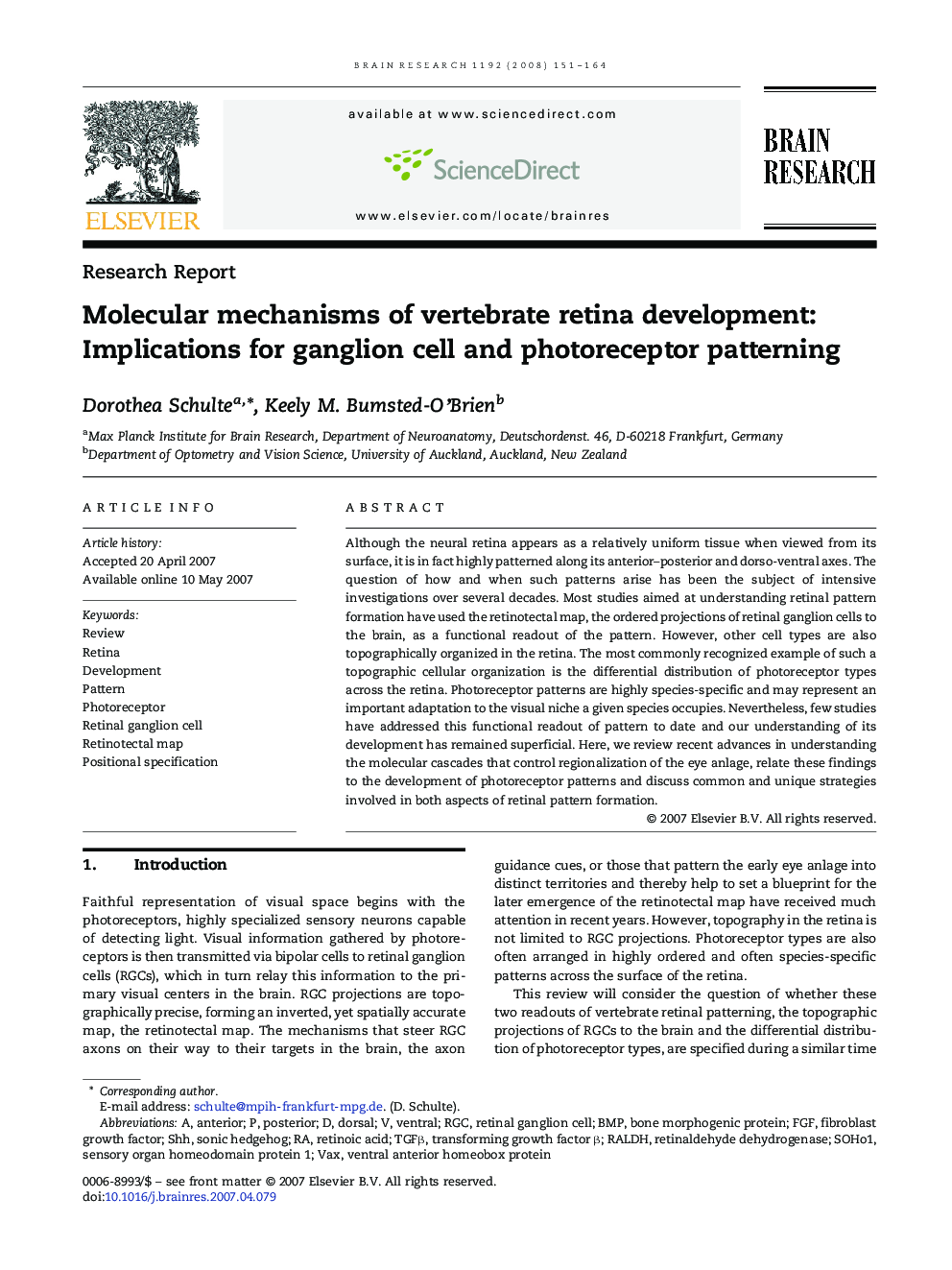| Article ID | Journal | Published Year | Pages | File Type |
|---|---|---|---|---|
| 4330157 | Brain Research | 2008 | 14 Pages |
Although the neural retina appears as a relatively uniform tissue when viewed from its surface, it is in fact highly patterned along its anterior–posterior and dorso-ventral axes. The question of how and when such patterns arise has been the subject of intensive investigations over several decades. Most studies aimed at understanding retinal pattern formation have used the retinotectal map, the ordered projections of retinal ganglion cells to the brain, as a functional readout of the pattern. However, other cell types are also topographically organized in the retina. The most commonly recognized example of such a topographic cellular organization is the differential distribution of photoreceptor types across the retina. Photoreceptor patterns are highly species-specific and may represent an important adaptation to the visual niche a given species occupies. Nevertheless, few studies have addressed this functional readout of pattern to date and our understanding of its development has remained superficial. Here, we review recent advances in understanding the molecular cascades that control regionalization of the eye anlage, relate these findings to the development of photoreceptor patterns and discuss common and unique strategies involved in both aspects of retinal pattern formation.
